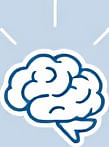Creative Problem-Solving for Easing Mental Overload
 by Thaddeus Blanda
by Thaddeus Blanda
Learn practical ways to use creative problem-solving to reduce cognitive load in daily routines. This approach helps students and professionals manage tasks more efficiently, fostering clearer thinking and better productivity without added stress.
Cognitive load refers to the amount of mental effort used in working memory. In busy lives, this can build up and lead to fatigue. Creative problem-solving offers a way to handle this by finding innovative solutions that simplify tasks.
One effective method is breaking down complex problems into smaller parts. For example, cognitive load often increases with overwhelming projects. By dividing them, individuals can focus on one element at a time, making the process less taxing.
Another strategy involves using visualization techniques. People can picture outcomes or steps visually, which helps in processing information without over-relying on verbal thought. This method is particularly useful for students preparing for exams, as it turns abstract concepts into tangible images.
Collaboration plays a key role too. Sharing ideas with others can distribute the mental work. In professional settings, team discussions allow for collective input, reducing the burden on any single person.
Routine automation is also helpful. Setting up habits like organizing workspaces daily can free up mental space for more creative endeavors. This way, repetitive decisions no longer contribute to daily overload.
Benefits in Everyday Life
For students, creative problem-solving can transform study sessions. Instead of memorizing facts, they might create mind maps or stories around the material. This not only aids retention but also makes learning enjoyable, easing the strain on mental resources.
Professionals dealing with deadlines can apply similar tactics. Productivity enhancement comes from rethinking workflows, such as prioritizing tasks based on energy levels. A simple shift, like tackling high-focus work in the morning, can prevent buildup of unnecessary pressure.
In family life, parents might use creative approaches to manage household chores. Turning cleaning into a game for children, for instance, lightens the mental load for everyone involved.
Practical Tips to Get Started
To begin, start with simple exercises. Try jotting down problems and brainstorming multiple solutions without judgment. This encourages a flow of ideas, helping to offload immediate stress.
Incorporate breaks into routines. Stepping away from a task allows the mind to reset, often leading to fresh insights. Regular pauses can significantly lower cognitive demands over time.
Experiment with tools like apps for note-taking or reminders. These can handle memory tasks, leaving more room for innovative thinking.
Physical activity supports this process as well. A short walk can clear the mind and spark creativity, providing a natural way to reduce overload.
Building Long-Term Habits
Over time, integrating these practices leads to sustained improvements. People often find they handle challenges with greater ease, as creative problem-solving becomes second nature.
Tracking progress is important. Keeping a journal of successes reinforces positive changes and highlights areas for adjustment.
Ultimately, these strategies empower individuals to take control. By addressing cognitive load through creativity, students and professionals alike can achieve a more balanced and effective daily life.
In conclusion, adopting creative problem-solving not only tackles immediate issues but also builds resilience against future overload. With consistent application, the benefits extend to overall well-being and efficiency.
